Discover the flavors of Filipino cuisine in this article. Explore traditional dishes that celebrate culture, community, and the joy of sharing a meal.
What is it about food that brings people together, igniting a shared passion for culture and heritage? The world of cuisine is vast, but Filipino food holds a unique place in the hearts of many. Rich in flavors and steeped in tradition, Filipino cooking offers a delightful experience that merits attention. This article aims to guide you through the tantalizing offerings of Filipino cuisine, showcasing the diversity and richness that characterize its dishes.
Understanding Filipino Cuisine
To appreciate Filipino food, it’s essential to understand its origins and the influences that have shaped it. Filipino cuisine is a product of centuries of trade and colonization, blending indigenous ingredients with flavors from Chinese, Spanish, American, and Malay traditions. This amalgamation has resulted in a culinary landscape that is as diverse as the islands themselves.
Key Characteristics
Filipino food is known for its bold flavors, often combining sweet, salty, sour, and bitter elements into one dish. The use of fresh ingredients is paramount, with many meals centered around rice and a variety of meats, vegetables, and seafood. This balance of flavors and textures is not merely for taste; it reflects the cultural values and history of the Filipino people.
Essential Filipino Dishes
It can be overwhelming to navigate the array of dishes that Filipino cuisine offers. The following are some essential Filipino dishes that embody the spirit and richness of this culinary tradition.
Adobo
Arguably the most well-known Filipino dish, adobo consists of meat—typically chicken or pork—marinated and cooked in a mixture of soy sauce, vinegar, garlic, and bay leaves. This dish is highly versatile; chefs often adapt the basic recipe by adding coconut milk, potatoes, or hard-boiled eggs.
Regional Variations
Adobo has numerous regional variations. For example, in Ilocos, it may be cooked with a touch of sugar and pepper, while in Batangas, the use of coconut oil and a distinctive spice blends elements of both savory and sweet.
Sinigang
Sinigang is a sour soup that typically uses tamarind as its souring agent. It often includes pork, shrimp, or fish, along with various vegetables like water spinach (kangkong), radish (labanos), and eggplant (talong).
Nutritional Benefits
This dish is not only delightful on the palate but also offers various health benefits due to its high vegetable content and the vitamins they provide. The sourness of the soup aids in digestion, making it a refreshing choice on a hot day.
Lechon
Lechon, or roasted whole pig, is a dish that’s synonymous with special occasions in the Philippines. Cooked over an open flame or in an oven for several hours, the skin becomes crispy while the meat remains tender and juicy.
Cultural Significance
This dish is a centerpiece at celebrations and festivals, symbolizing abundance and hospitality. The preparation of lechon requires skill and patience, often serving as an event that gathers family and friends.
Pancit
Pancit refers to various noodle dishes in Filipino cuisine, with guisado, canton, and palabok being some popular versions. Made from rice or egg noodles, they can be stir-fried or served in broth.
Festive Tradition
Pancit is traditionally served during birthdays and other celebrations, as it’s believed to bring long life. The dish symbolizes longevity, and its preparation often involves a colorful mix of vegetables and proteins, resulting in a visually appealing meal.
Lumpia
These are Filipino spring rolls, available in fresh or fried versions. Lumpia is typically filled with a mix of vegetables and meats, served with a dip like sweet chili sauce or vinegar.
Popular Variations
The classic variant is lumpiang shanghai, filled with ground pork, carrots, and green onions. Another version, lumpiang sariwa, features fresh vegetables wrapped in a crepe and topped with a sweet nutty sauce.
Kare-Kare
Kare-kare is a Filipino oxtail stew characterized by its rich peanut sauce. Traditionally served with a side of bagoong (fermented shrimp paste), this dish is a favorite during family gatherings and celebrations.
Cooking Method
The preparation of kare-kare involves slow-cooking the oxtail until tender, then incorporating vegetables such as eggplant, banana heart, and string beans to create a hearty dish.

The Role of Rice
In Filipino cuisine, rice holds a central position. Known as “kanin,” rice is a staple and accompanies nearly every meal. The importance of rice can be seen in its variety, from plain steamed rice to flavored rice dishes such as garlic rice or sinangag.
Types of Rice
| Rice Type | Description |
|---|---|
| Jasmine Rice | Aromatic and often used in various Filipino dishes. |
| Glutinous Rice | Sticky rice used for desserts and specialty dishes like suman (rice cakes). |
| Brown Rice | A healthier alternative, often served to health-conscious eaters. |
Traditional Filipino Desserts
No culinary exploration would be complete without indulging in Filipino desserts. They often incorporate coconut, rice, and tropical fruits, creating a delightful end to any meal.
Halo-Halo
Halo-halo is a famous Filipino dessert that consists of crushed ice, sweetened fruits, jellies, beans, and topped with leche flan, ube (purple yam), and sometimes even ice cream. It is a refreshing treat, particularly enjoyed during the hot months.
Ingredients and Variations
The versatility of halo-halo allows for various interpretations. Different regions may incorporate local fruits or variations, but the essence remains the same—instant refreshment on a hot day.
Leche Flan
This is a creamy caramel custard dessert, made from egg yolks, condensed milk, and sugar. The silky texture and sweet flavor make it a popular finale for many family meals.
Presentation and Serving
Leche flan is often served in thin slices, making it an elegant dessert perfect for special occasions. It symbolizes sweet endings and gatherings in Filipino culture.
Bibingka
Bibingka is a rice cake traditionally made from rice flour and coconut milk, often cooked in banana leaves. This slightly sweet cake is popular during the Christmas season.
Cultural Significance
In Filipino households, bibingka represents home and warmth, evoking memories of festive gatherings and community celebrations.
Unique Ingredients
Filipino food relies heavily on unique ingredients, many of which may not be familiar to those outside the culture. Understanding these ingredients can enhance your appreciation for the dishes you encounter.
Bagoong
This fermented shrimp or fish paste is commonly used as a seasoning or dip. Its strong flavor may be an acquired taste, but it is essential in dishes like kare-kare and is often paired with fried fish.
Calamansi
Calamansi is a small citrus fruit native to the Philippines, often used as a souring agent or flavor enhancer. Its tartness adds depth to numerous dishes and drinks.
Ube
Ube, or purple yam, is a popular ingredient in Filipino desserts, known for its vibrant color and sweet flavor. It is commonly found in ube halaya (purple yam jam) and halo-halo.
Dining Culture
The dining experience in the Philippines transcends just the food; it’s a social event. Meals are often communal, encouraging shared experiences that strengthen relationships and create lasting memories.
Kamayan
The “kamayan” tradition involves eating with your hands, often enjoyed during special occasions. This approach not only fosters a sense of togetherness but also adds an element of fun to the dining experience.
Family Gatherings
Filipino families prioritize togetherness during meals. Whether it’s a Sunday gathering or a festive celebration, food is a cornerstone of the Filipino experience, showcasing love and hospitality.

Filipino Food Around the World
As the Filipino diaspora expands, the global appreciation for Filipino cuisine has grown. Various restaurants and food trucks are now introducing Filipino dishes to diverse audiences.
Food Festivals
In many major cities, Filipino food festivals celebrate this vibrant cuisine, allowing people to taste and experience traditional dishes prepared by chefs from the Philippines and the diaspora.
Popular Filipino Food Chains
Several prominent Filipino food chains, such as Jollibee and Max’s Restaurant, have established international branches. These establishments offer a taste of home for Filipinos abroad while introducing locals to Filipino flavors.
Conclusion
Filipino food represents a remarkable tapestry of cultures, traditions, and flavors. It encapsulates a sense of community and hospitality that is deeply embedded in the Filipino way of life. As you consider diving into these delicious offerings, remember that each dish tells a story—a story of heritage, resilience, and love. By savoring the diverse flavors of Filipino cuisine, you are not just indulging in a meal; you are partaking in a rich cultural legacy that is meant to be shared and savored. Understanding and appreciating Filipino food is not just about tasting a dish; it’s about embracing a cultural experience that connects people from all walks of life.


